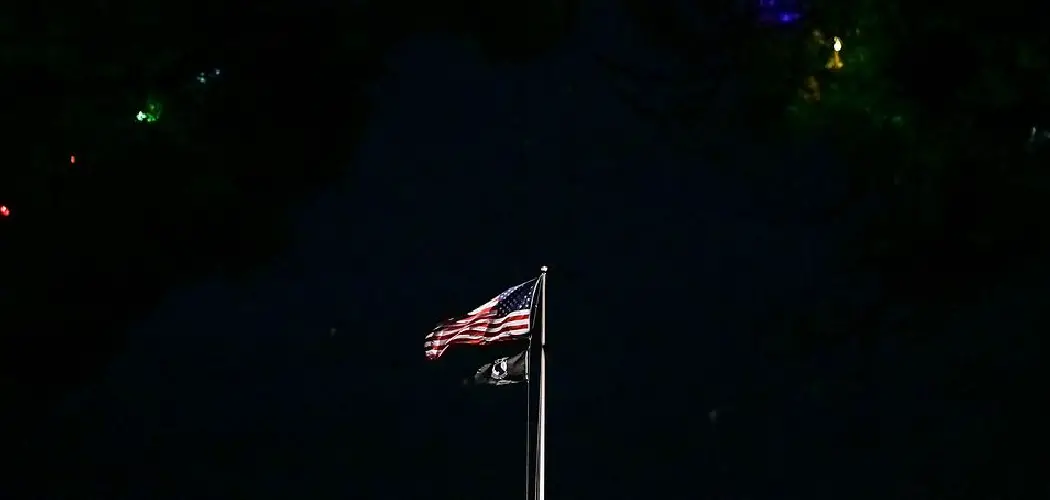Lighting a flag pole is an important task that requires careful consideration and proper execution. The American flag, in particular, holds great significance for its citizens and deserves to be lit up with pride and respect.
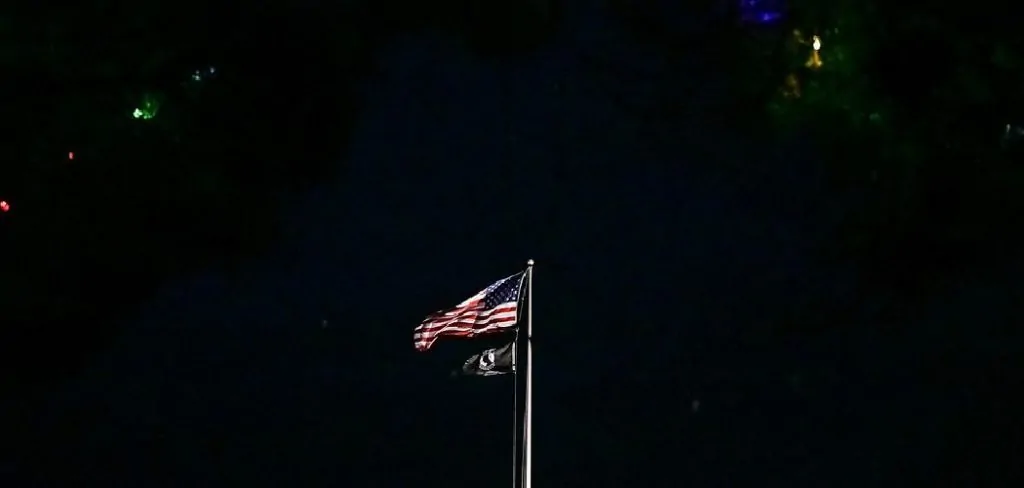
One may want to light up their flag pole for various reasons. Some do it as a patriotic gesture, while others do it for practical reasons like increasing visibility at night. Whatever the motivation, it is crucial to follow the proper steps to ensure that the flag pole is safely and effectively lit. In this guide, we will discuss the necessary steps on how to light a flag pole.
Understanding Flag Pole Lighting
Before we proceed, it is essential to understand the basics of flag pole lighting. First and foremost, it is crucial to note that lighting a flag pole is not just about illuminating the flag itself. It also involves creating an aesthetically pleasing display that showcases the flag in its full glory.
Different types of lighting options are available for flag poles, including solar-powered, LED, and traditional floodlights. Each has its advantages and disadvantages, and it is up to the individual to choose the one that best suits their needs.
Another important factor to consider is the flag pole’s location. Is it on a residential property or a commercial building? The placement will determine the type of lighting needed and any specific regulations that need to be followed.
Tools and Materials You Will Need to Light a Flag Pole
- A ladder or scaffolding (depending on the height of the flag pole)
- Lighting fixtures (solar-powered, LED, or traditional floodlights)
- Extension cords (if needed)
- Timer or photocell for automatic on/off functionality
- Electrical tape and wire cutters for wiring (if applicable)
- Protective gear such as gloves and safety glasses.
Step-by-step Guidelines on How to Light a Flag Pole
Step 1: Prepare the Necessary Tools and Materials
Before starting any project, gathering all the required tools and materials is essential. Inspect them for any damage or malfunction before use. Having someone assist you with holding the ladder or scaffolding while you work is also a good idea.
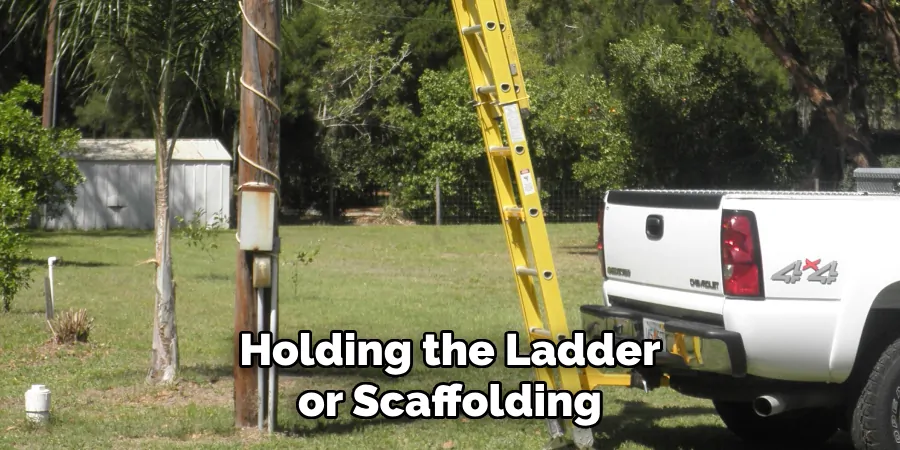
If you use electrical fixtures, ensure the power source is turned off before handling any wiring. Make sure to follow all safety precautions.
Step 2: Determine the Best Lighting Option for Your Flag Pole
As mentioned earlier, each type of lighting has pros and cons. Before making a decision, consider factors such as cost, energy efficiency, and maintenance requirements. This will help you choose the best lighting option that meets your needs and budget. It is always best to consult a professional if you need more clarification.
Step 3: Mount the Lighting Fixtures
Follow the manufacturer’s instructions on how to mount the lighting fixtures. If using traditional floodlights, make sure they are pointed at an angle toward the flag pole and not directly at the flag itself.
Solar-powered or LED lights should be positioned in an area that receives ample sunlight during the day. If using extension cords, make sure they are safely tucked away and not a tripping hazard.
Step 4: Set Up the Automatic On/Off Functionality
To ensure your flag is always properly lit, consider installing a timer or photocell that will automatically turn the lights on at dusk and off at dawn.
This feature will also save you the hassle of having to manually turn the lights on and off every day. While this step is optional, it is highly recommended for convenience and efficiency.
Step 5: Regular Maintenance
Inspect the lighting fixtures regularly to ensure they are working correctly. Replace any burnt-out bulbs or damaged fixtures immediately. Keep the area around the flag pole clean and free of any debris that may obstruct the lights. This will help maintain the flag’s proper display and prevent any potential safety hazards.
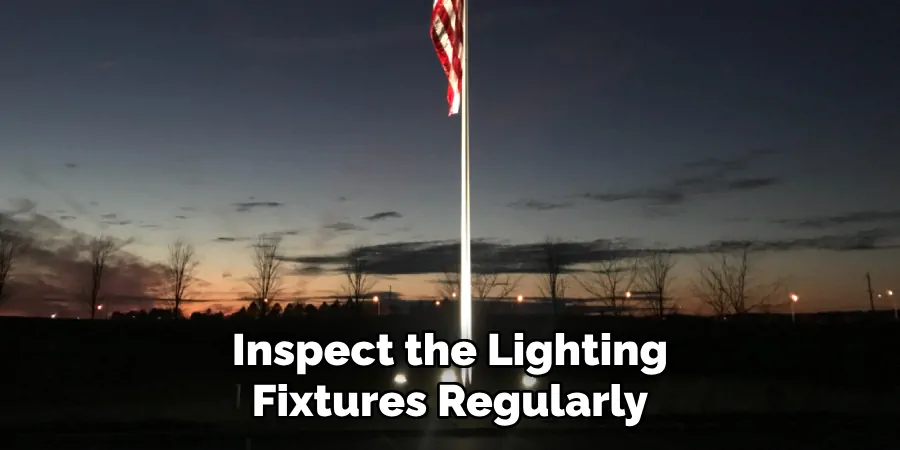
In conclusion, lighting a flag pole may seem like a simple task, but it requires careful planning and execution. Following these guidelines ensures that your flag pole is always properly lit with pride and respect. Remember to always prioritize safety and consult a professional if needed. Happy flag pole lighting!
Additional Tips and Tricks to Light a Flag Pole
1. Consider using a telescoping flag pole if you have a tall flag pole that is difficult to reach. These poles are adjustable and can easily be lowered for maintenance or to change the flag. If you are using a traditional flag pole, consider investing in a ladder or platform to safely reach the top.
2. Regularly clean your flag with mild soap and water to keep it looking its best. Avoid using harsh chemicals as they can damage the fabric or design of the flag.
3. If you live in an area with strong winds, invest in a wind sock to help protect your flag from wear and tear. Windsocks are designed to help redirect the wind, reducing strain on the flag.
4. Consider installing a pulley system for your flag pole to make raising and lowering the flag easier. This also helps prevent the flag from tangling when hoisting it up.
5. When lighting your flag at night, avoid using spotlights or floodlights directly on the flag, as they can cause glare and potentially damage the fabric. Instead, consider using smaller, focused lights placed at a distance from the flag to create a soft, ambient light.
6. If you are displaying multiple flags on one pole, make sure to always fly the American flag at the top and ensure that all other flags are of equal or smaller size. The American flag should never be flown below any other flag.
7. If your flag becomes damaged or worn, replace it with a new one as soon as possible. A tattered or torn flag is disrespectful and should not be flown. You can properly dispose of a damaged flag by burning it in a respectful manner.

8. It is recommended to regularly check and maintain the hardware on your flag pole, such as the pulley system and ropes. Replace any worn or damaged hardware to ensure safe and effective use of your flag pole.
9. Consider using solar-powered lights to illuminate your flag at night. They are environmentally friendly and can help save on energy costs.
10. Lastly, be sure to properly lower and fold your flag in inclement weather to prevent any damage or wear. This includes strong winds, rain, snow, and extreme temperatures.
Following these tips and tricks will help ensure your flag pole remains in good condition and that you can proudly fly your flag with respect and honor. Remember to always follow proper flag etiquette and proudly display the American flag. So, go ahead and light up your flag pole with confidence using these additional tips!
Things You Should Consider to Light a Flag Pole
1. The first thing to consider when lighting a flag pole is the type of lighting. There are various options available, such as solar lights, LED lights, and halogen lights. Each type has its own advantages and disadvantages, so it’s important to research and choose the best option for your specific needs.
2. The location of the flag pole is also an important factor to consider. If the flag pole is located in a remote area with limited access to electricity, solar lights would be the most practical option. However, if the flag pole is near an electrical outlet, LED or halogen lights could be used instead.
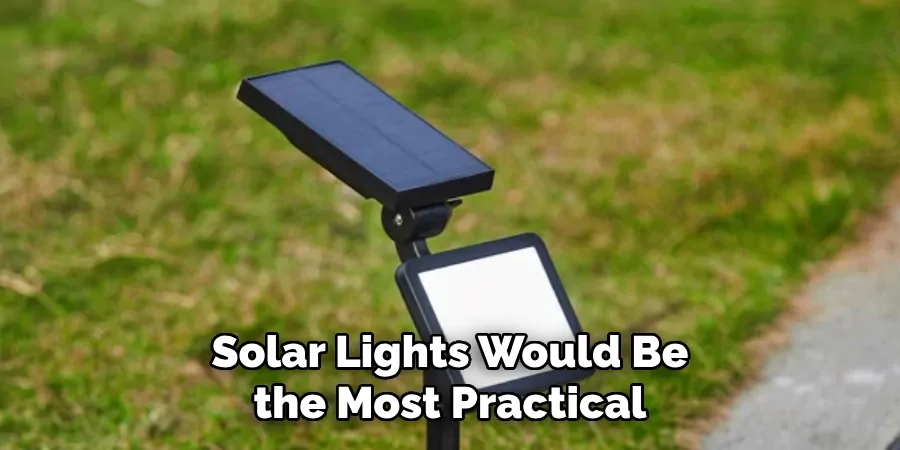
3. The flag pole’s size and height should also be considered when choosing lighting. A taller flag pole may require more powerful lighting to illuminate the flag properly. It is important to choose lighting that is bright enough to be visible from a distance but not so bright that it causes glare or light pollution.
4. Another factor to consider is the flag pole’s material. Metal poles may require different types of lighting than wooden poles, as metal can reflect and disperse light differently. Additionally, if the flag pole has any embellishments or decorations, special lighting may be needed to showcase them properly.
5. It’s also important to consider the weather conditions in the area where the flag pole is located. If the area experiences strong winds or harsh weather, durable lighting that can withstand these conditions is necessary. LED lights are a good option for this scenario, as they are known for their durability and longevity.
6. Proper lighting installation is crucial for both safety and effectiveness. Follow manufacturer instructions and, if necessary, hire a professional to ensure the lighting is installed correctly and securely.
7. Lighting maintenance is also important. Regularly checking for issues or malfunctions can prevent potential hazards and ensure the flag pole remains properly lit at all times.
8. Finally, consider the cost of the lighting options and factor it into your budget. While solar lights may have a higher upfront cost, they can save money in the long run with no electricity usage and lower maintenance costs. LED lights tend to be more energy-efficient but may have a higher initial cost compared to halogen lights.
Following these considerations can help you choose the best lighting for your flag pole, ensuring it is properly illuminated with minimal maintenance and cost. Remember to research and compare different options before making a decision, and always prioritize safety when installing and maintaining lighting for your flag pole. So go ahead, light up your flag pole with pride!
Troubleshooting Common Issues to Light a Flag Pole
1. Flag Pole Not Extending Fully:
A few common issues could cause a flag pole not to extend fully. The first thing to check is if the rope or pulley system is damaged or tangled. Make sure the rope is properly connected and free of knots or tangles. If this is in good condition, the next thing to check is if there is any debris or dirt buildup on the pole itself.

This can cause friction and prevent the pole from extending smoothly. Clean off any dirt or debris with a mild soap and water solution, being careful not to damage the pole’s finish. If neither of these solutions works, there may be an issue with the internal parts of the flag pole mechanism. In this case, it may be best to contact the manufacturer for further assistance.
2. Flag Pole Not Staying Straight:
It can be frustrating to hoist your flag only to watch it droop or lean to one side. The most common cause of this issue is a loose ground sleeve, which is the part of the pole that goes into the ground.
Check to make sure that the sleeve is securely in place and that the bolts or screws holding it in place are tight. Another common issue is a bent flag pole, which can occur from strong winds or heavy objects hitting the pole. If you suspect this to be the case, visually inspect the pole for any bends or kinks and replace them if necessary.
3. Flag Pole Rusting:
Over time, metal flag poles may start to show signs of rust. This can be due to exposure to the elements or improper maintenance. To prevent rusting, make sure to regularly clean and wax your flag pole with a non-abrasive cleaner and mild car wax.
If you notice rust starting to form, gently sand it away with fine-grit sandpaper and touch up the area with metal paint or sealant. For severe rusting, it may be best to replace the pole entirely.
4. Flag Fading:
As your flag proudly flies in the sun and wind, it is natural for it to start losing its vibrant colors over time. To help prolong the life of your flag’s colors, make sure to fly only in good weather conditions and take it down during extreme weather.
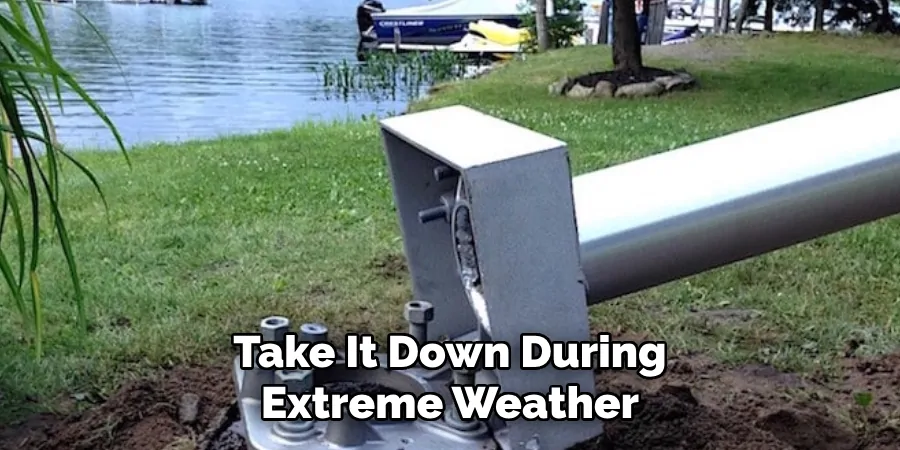
Regularly washing your flag with a mild detergent and warm water can help prevent fading. If you notice any holes or tears in your flag, replace it with a new one. Consider purchasing a UV-resistant flag to help prevent fading from sun exposure.
5. Flag Pole Making Noise:
If your flag pole is making a rattling or clanging noise, it may be due to loose or worn-out hardware. Check all the bolts and screws on your flag pole and tighten any that may have come loose over time.
If the noise persists, try applying a small amount of lubricant to the moving parts of the flag pole mechanism. If this does not solve the problem, it may be best to contact the manufacturer for further assistance.
6. Flag Pole Installation Issues:
Installing a flag pole can be a complex process, and following instructions is important. Common issues that may arise during installation include needing the correct tools, improper placement or installation of the ground sleeve, and using incorrect hardware.
To avoid these issues, make sure to carefully read all instructions and have all necessary tools on hand before beginning the installation process. If you encounter any difficulties, do not hesitate to contact the manufacturer for assistance. Remember to always prioritize safety when installing a flag pole.
Following these troubleshooting tips can help ensure that your flag pole stays in top condition and proudly displays your flag for years to come. If you encounter any other issues not listed here, feel free to reach out to the manufacturer for assistance.
With proper maintenance and care, your flag pole will continue to be a symbol of pride and patriotism for many years. Happy flag flying!
Frequently Asked Questions
What is the Best Way to Light a Flag Pole?
The best way to light a flag pole is by using special lighting fixtures designed specifically for that purpose. These fixtures are typically mounted at the base of the flag pole or attached to the pole itself. They provide a focused and directed light that illuminates the flag from top to bottom, ensuring that it is properly lit.
What Type of Lighting Should I Use?
The type of lighting you should use for your flag pole will depend on several factors, such as your budget, personal preference, and the location of your flag pole. Some popular options include LED spotlights, solar lights, and low-voltage landscape lighting.
Do I Need to Light My Flag Pole at Night?
Lighting your flag pole at night is recommended as it shows respect and honor for the flag. Additionally, many countries have regulations that require flags to be properly lit if flown at night. However, if your flag is not illuminated at night, it should be taken down and properly folded until the next morning.
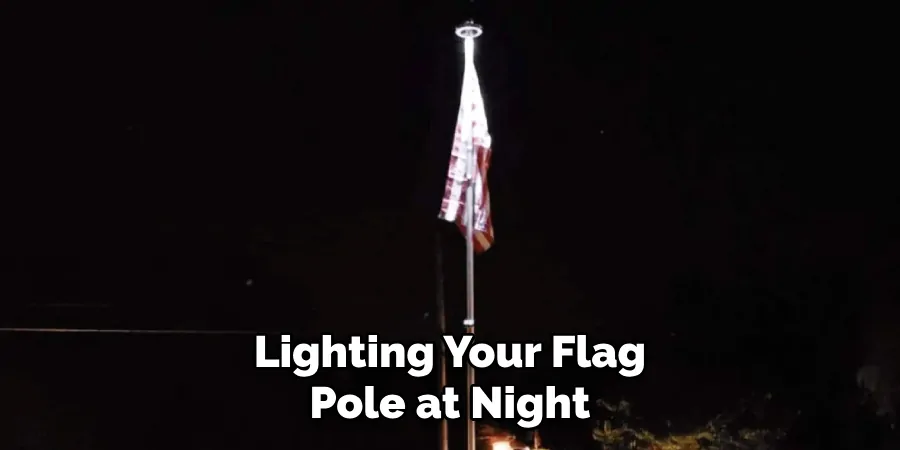
How Bright Should the Lights Be?
The brightness of the lights will depend on the height of your flag pole and the surrounding lighting conditions. Generally, you want enough light to fully illuminate the flag without causing glare or shadows. It is important to also consider light pollution and choose energy-efficient lighting.
Can I Use String Lights to Light My Flag Pole?
While string lights may seem like a convenient option, they are not recommended for flag pole lighting. These lights are not designed for outdoor use and can pose a fire hazard. Additionally, they do not provide the focused and directed light needed to illuminate a flag pole properly.
How Can I Make Sure My Flag Pole Lighting Is Safe?
To ensure the safety of your flag pole lighting, follow proper installation instructions and regularly inspect the fixtures. LED lights are also recommended, as they are more energy-efficient and produce less heat than traditional bulbs.
Conclusion
Now you know how to light a flag pole and the importance of properly illuminating your flag. Whether it’s for personal or national pride, it is essential to use the correct type of lighting and follow safety guidelines.
Remember to also check with local regulations before installing flag pole lighting. With proper installation and maintenance, your flag will be proudly flying day and night. So go ahead, light up that flag pole, and show your patriotism! Happy flag flying!

